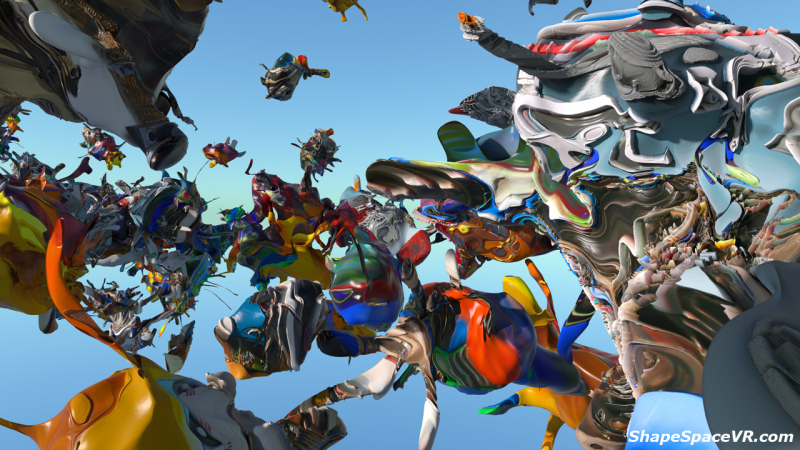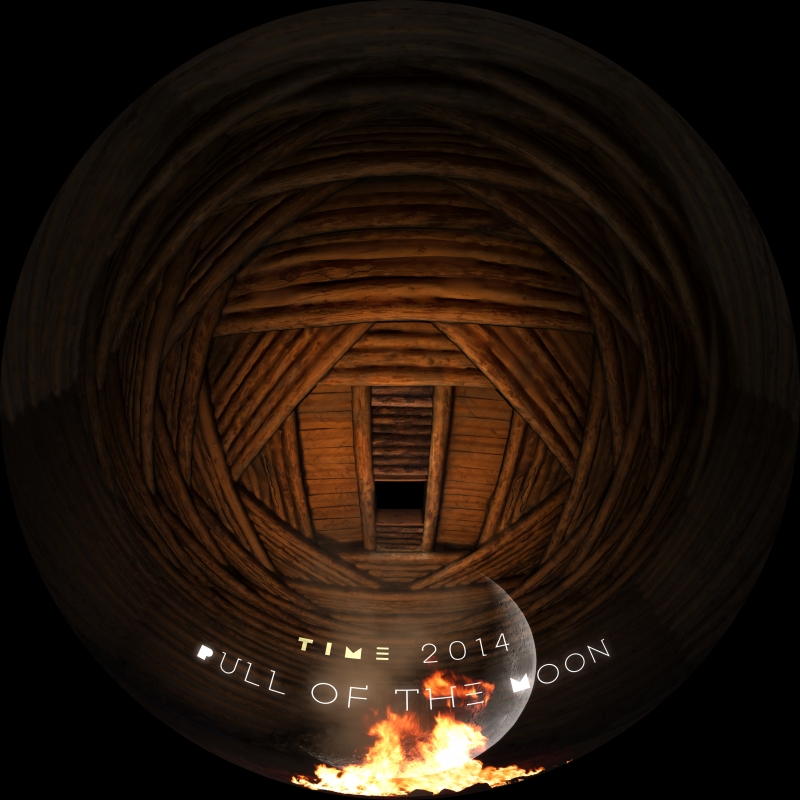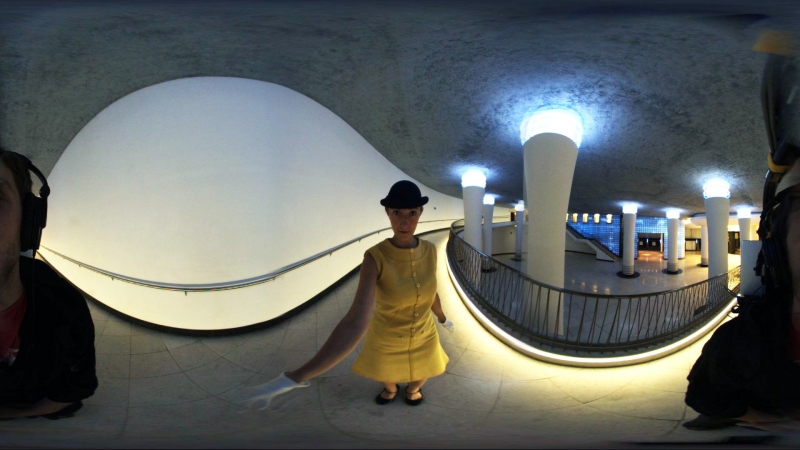This year, SIGGRAPH hosted the VR Village, a new venue dreamt up by Ed Lantz, which featured, as one might suspect, a sampling of current virtual reality projects. What set this apart from many other VR smorgasbords was that the focus was more on the content (as it arguably should be) than on the technology. Some exhibits were focused on education, entertainment, or ability to do brand promotion, which is to be expected of course. But a handful were intent on pushing the artistic possibilities of the medium.

The fantastical work of Kevin Mack (Shape Space VR) was sort of a dynamic Chihuly manifestation of a Tanguy landscape, in which the viewer is essentially immersed in a school of dynamic molten glass objects swimming past; their form and texture undulating in a subtle and yet apparent manner. One expects to be swallowed by one of these weightless, modulating entities as they slowly storm towards you, but somehow they pass harmlessly, giving the eye a sensuous technicolor treat as they float by just out of reach.


Once you have donned your gear, the 15-minute experience commences with a gentle Belgian tour guide taking your virtual hand and leading you through her beloved Brussels. Simultaneously, in the real world, the guide's physical avatar (a live gallery assistant) holds your actual hand in the same manner, directing you as your clumsy legs traverse the concrete floors of the exhibit space in what may look to others as a strange human-cyborg dance. While it might sound like a gimmick, it is actually quite effectual. The result is a pleasantly uncomfortable feeling of being in two different, but parallel, worlds at once.
It was encouraging to see these three very different artists exploring divergent aspects of the cinematic VR medium, and exciting to see them side-by-side in a single location. We are hopeful that these vectors provide fertile ground for an increasingly wide range of future creative endeavors.

